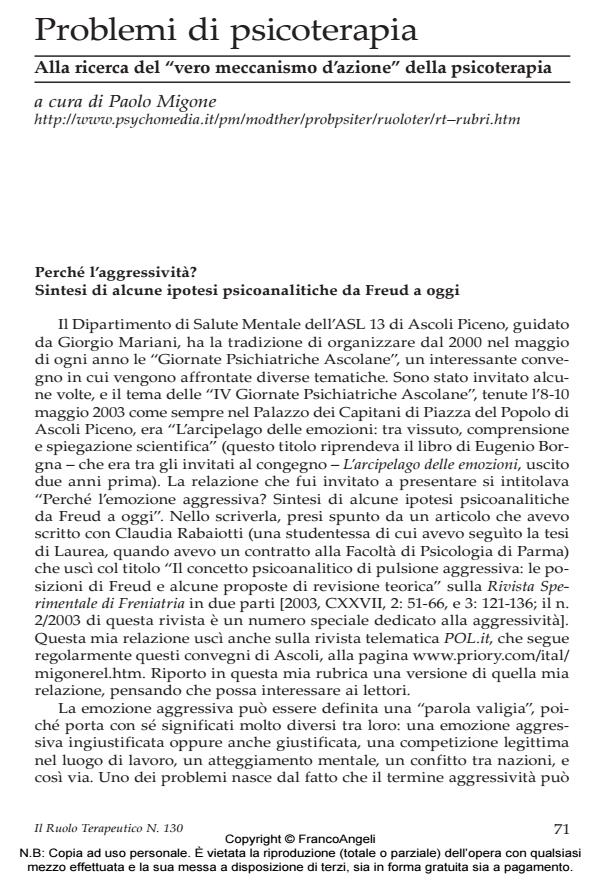Why aggression? a synthesis of some psychoanalytic hypotheses from freud to current times
Journal title RUOLO TERAPEUTICO (IL)
Author/s Paolo Migone
Publishing Year 2015 Issue 2015/130
Language Italian Pages 23 P. 71-93 File size 294 KB
DOI 10.3280/RT2015-130008
DOI is like a bar code for intellectual property: to have more infomation
click here
Below, you can see the article first page
If you want to buy this article in PDF format, you can do it, following the instructions to buy download credits

FrancoAngeli is member of Publishers International Linking Association, Inc (PILA), a not-for-profit association which run the CrossRef service enabling links to and from online scholarly content.
The history of the psychoanalytic hypotheses on the genesis of aggression is briefly reviewed. Firstly, Sigmund Freud’s thought is examined, following a 1981 essay by Gian Vittorio Caprara where Freud’ papers are discussed in chronological order, including the pivotal paper "Beyond the pleasure principle" of 1920. The positions of the following psychoanalysts are then briefly reviewed: Alfred Adler, Anna Freud, Melanie Klein, Wilhelm Reich, Otto Fenichel, Heinz Hartmann, Erich Fromm, Heinz Kohut, Otto Kernberg, Joseph Lichtenberg, Drew Westen, and Peter Fonagy. The aggressive drive (also called death instinct, thanatos, mortido, etc.) has been generally explained according to these two basic hypotheses: as originating from the inside (aggression as instinctual drive) or from the outside (aggression as a reaction to frustration of important needs). An abandonment of this dichotomy is suggested, also because it is based on an outdated conception of mind development. Current research on neurobiology and philosophy of mind shows a continuous interplay, from birth onward, between the brain and the environment
Keywords: Aggression, psychoanalysis, death instinct, thanatos, destructiveness, aggressive drive
Paolo Migone, Problemi di psicoterapia. Alla ricerca del "vero meccanismo d’azione" della psicoterapia in "RUOLO TERAPEUTICO (IL)" 130/2015, pp 71-93, DOI: 10.3280/RT2015-130008